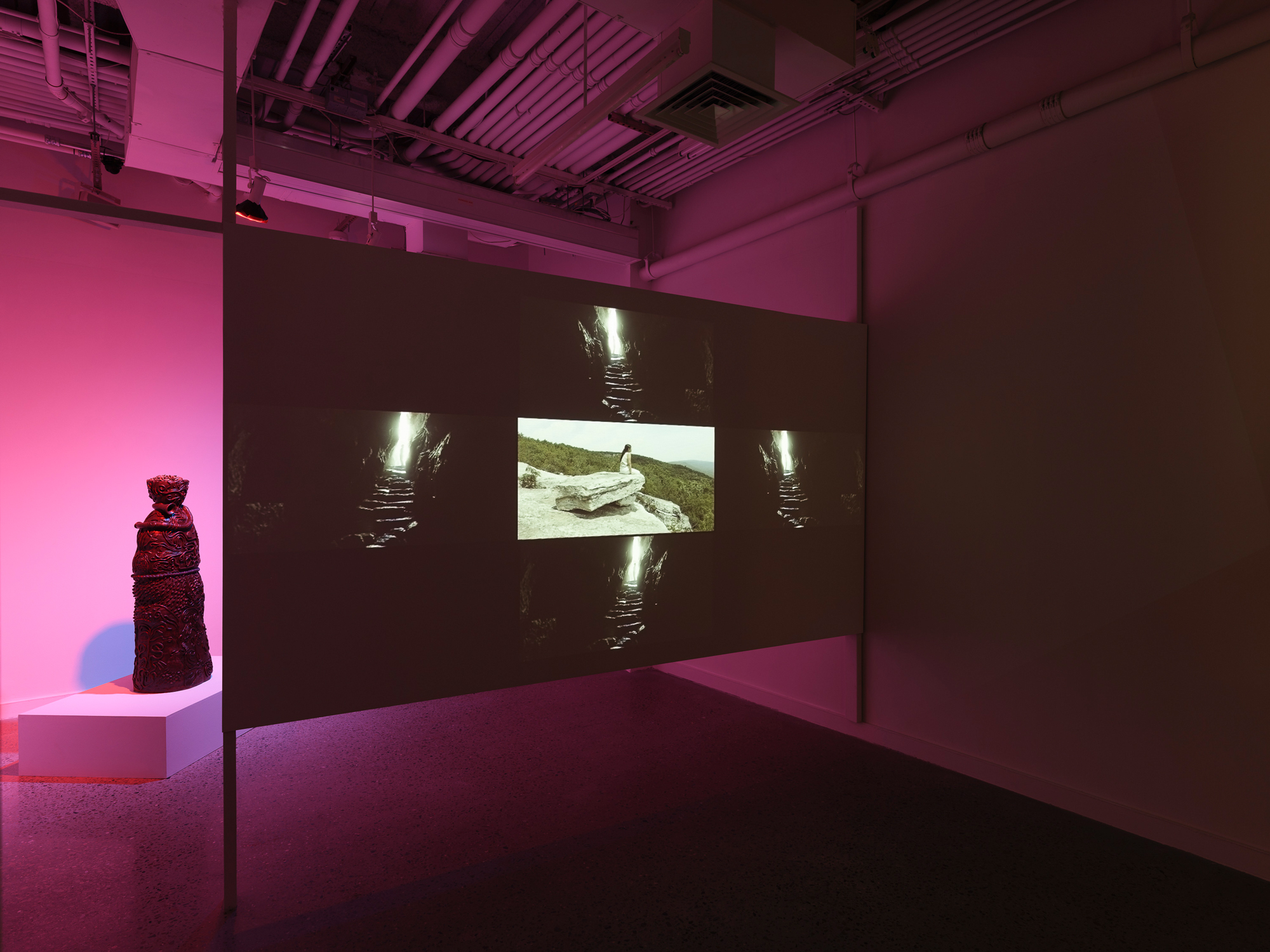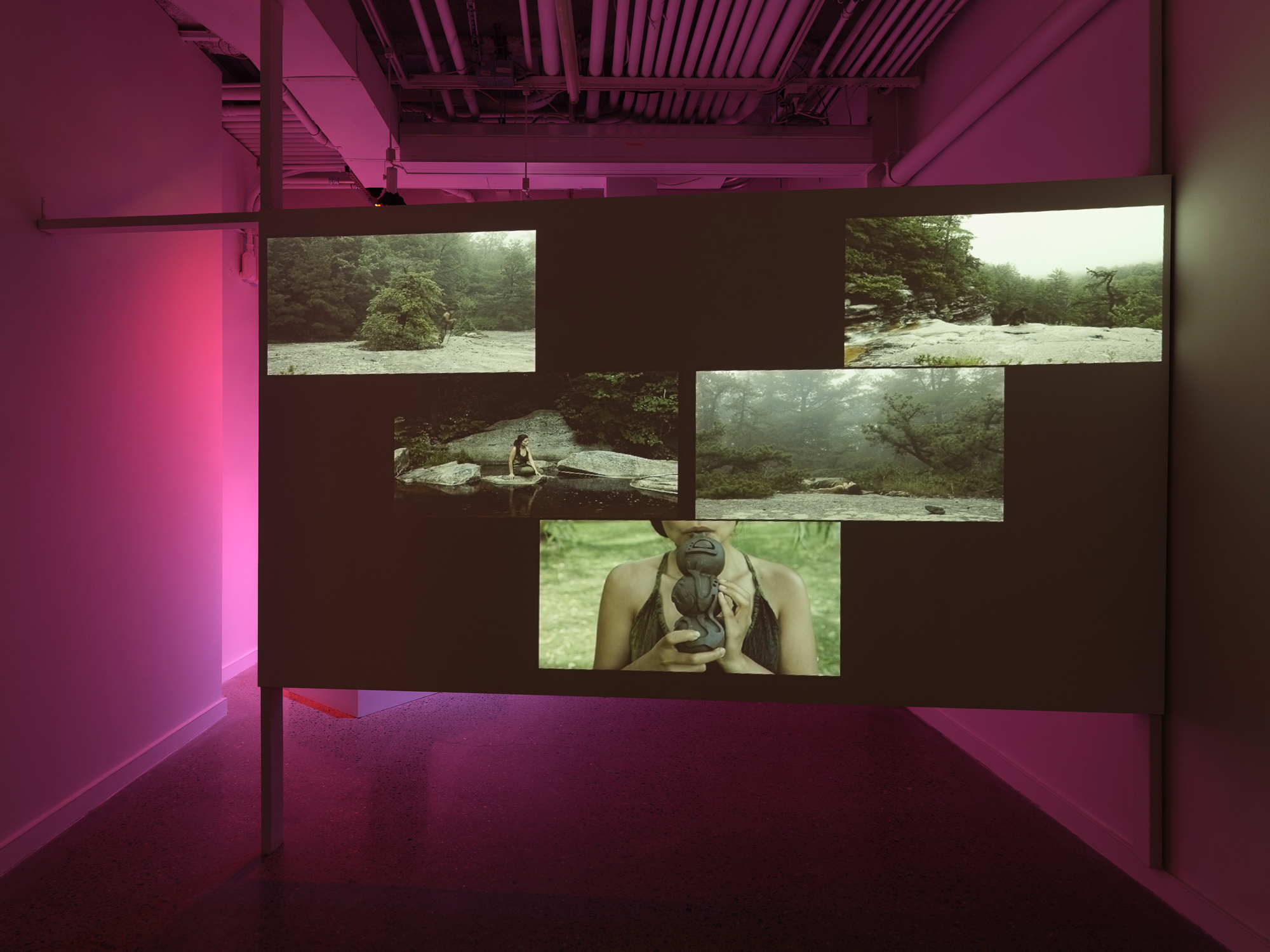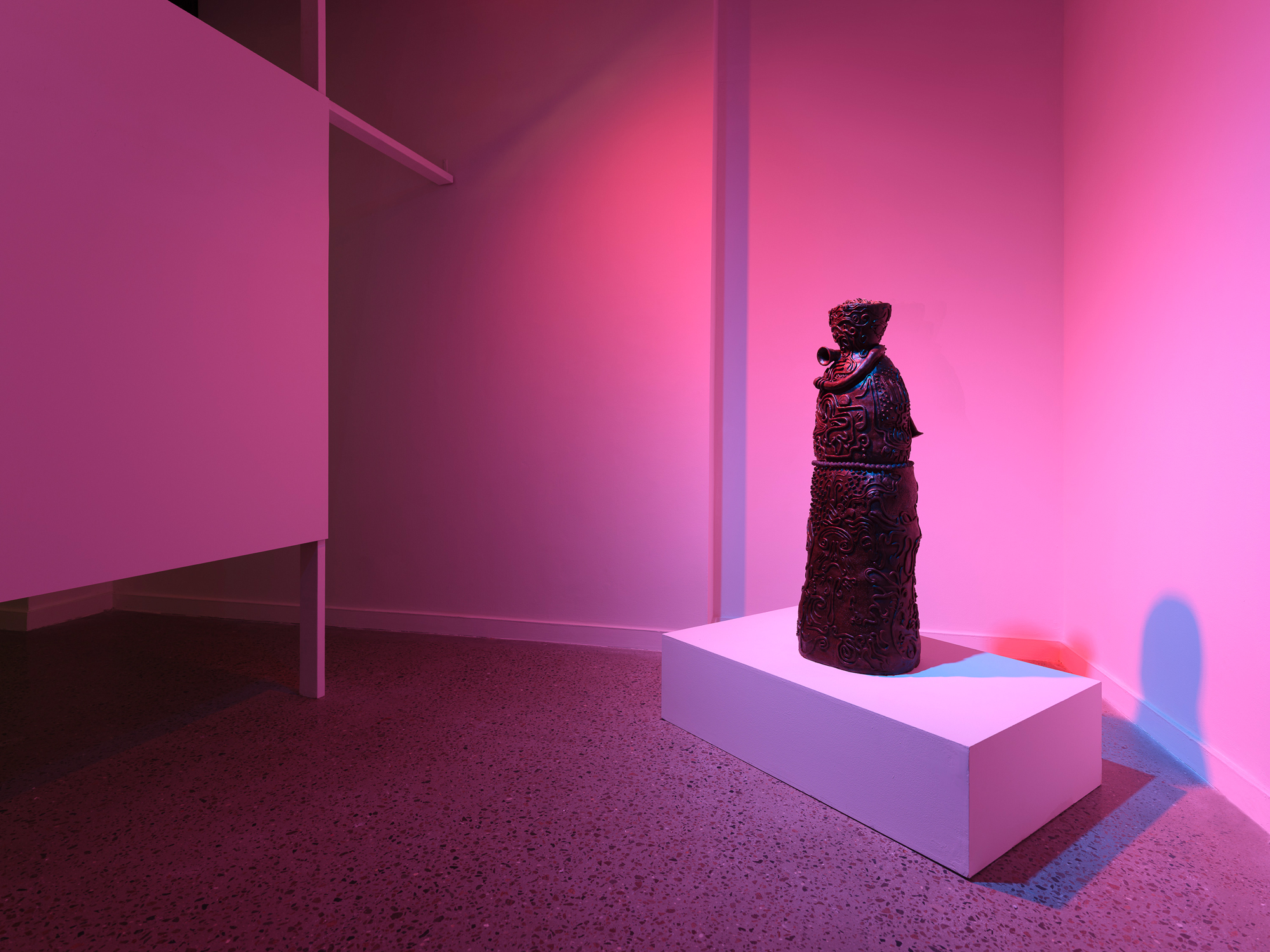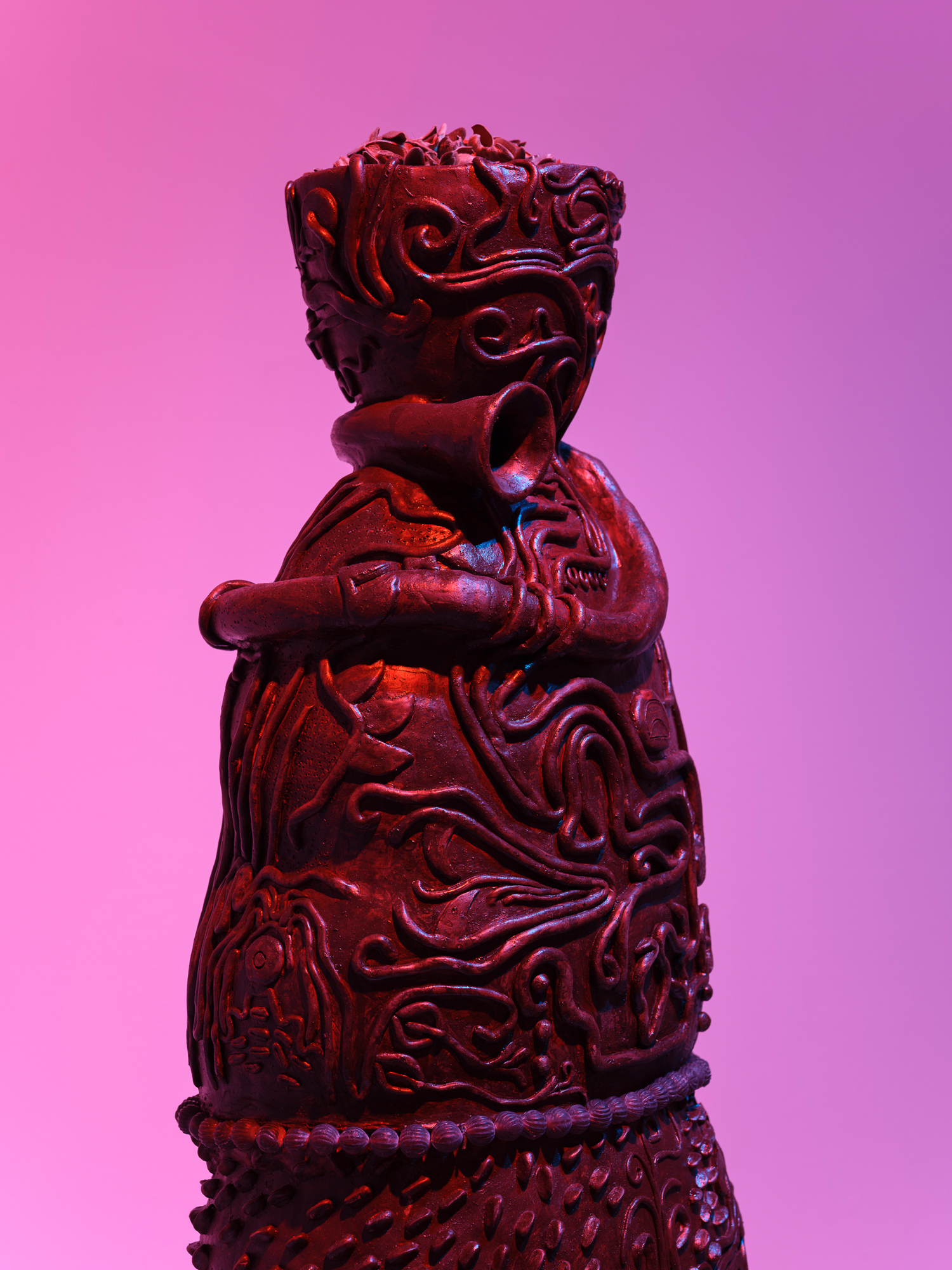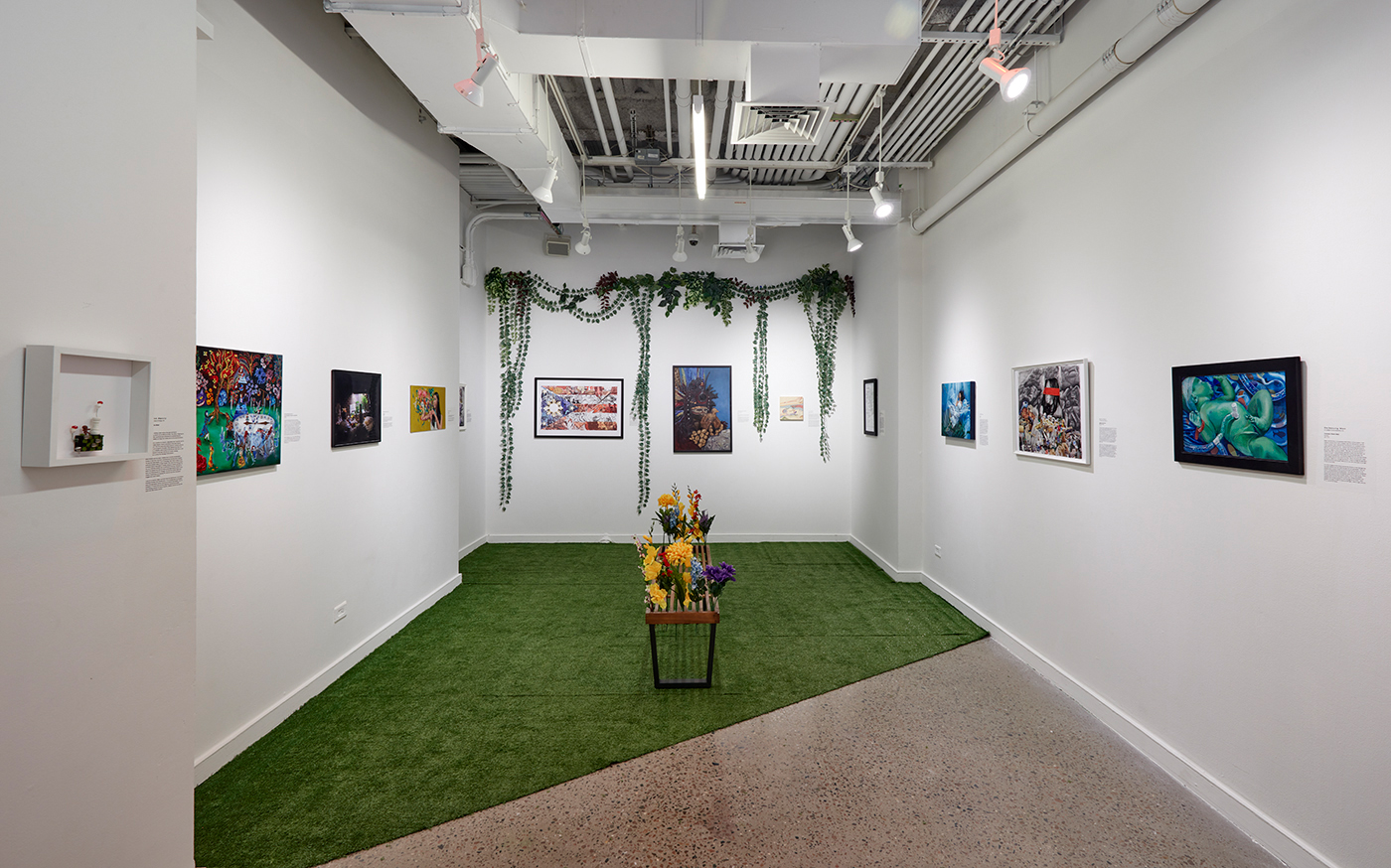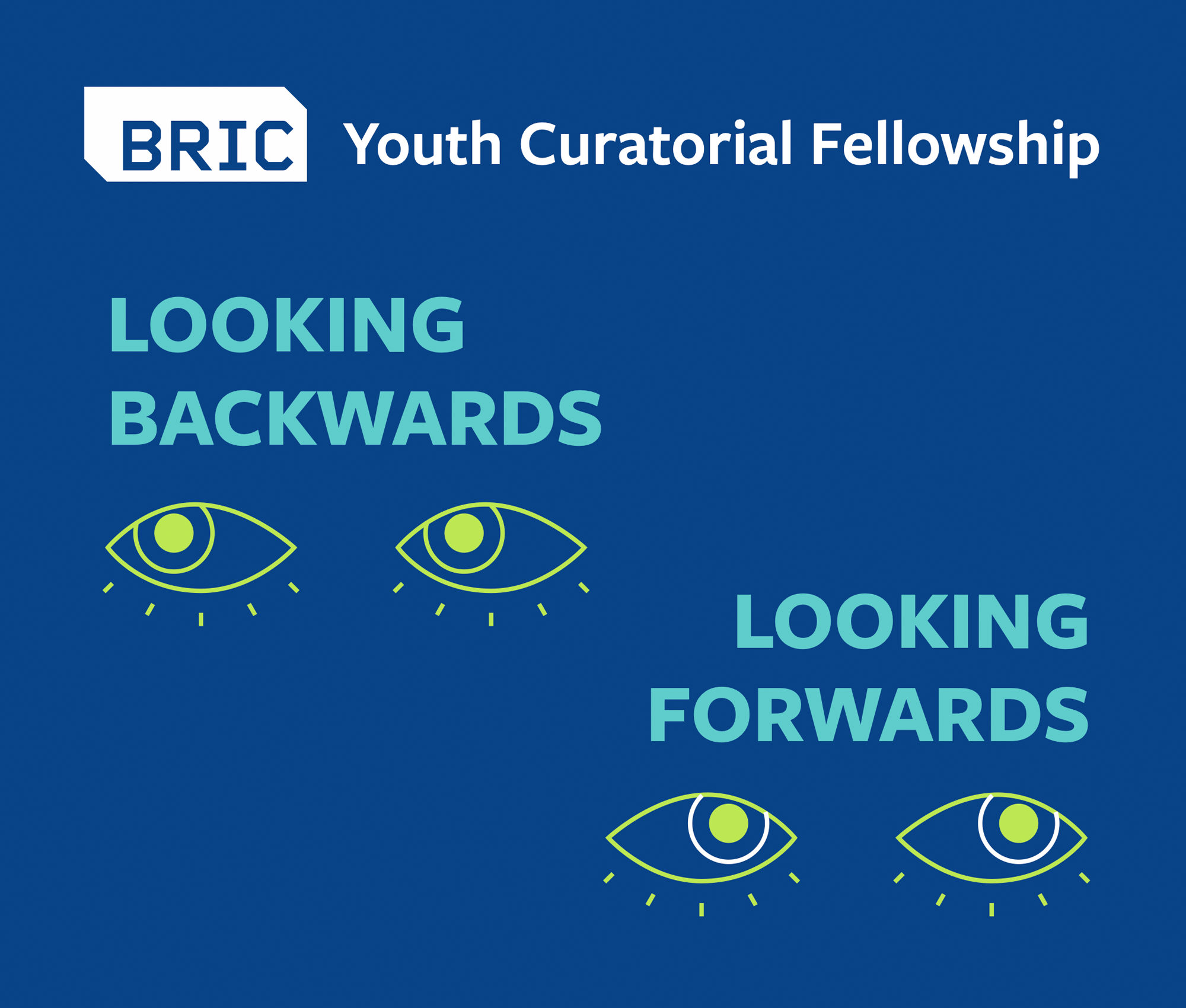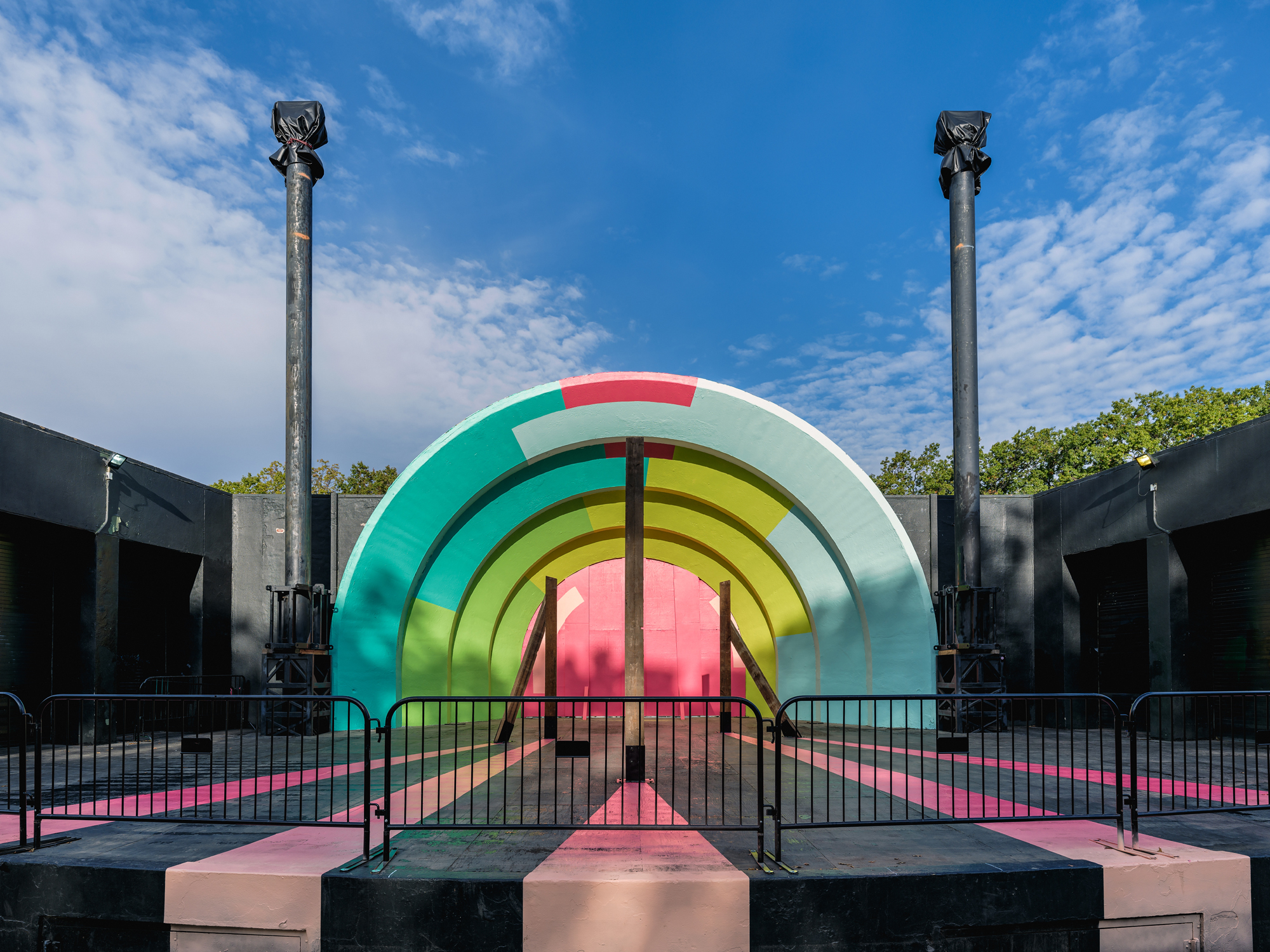Exhibition Info
The Mountain I am,
the air I am
the spirit that flows in all things I am
I surround you
– Matilde, the artist’s elder
The Mountain I am, Urku ñuka kani contains two elements, a composite video and a large-scale handmade ceramic sound instrument. The video documents Koyoltzintli Miranda-Rivadeneira performing a series of rituals in which she introduces herself to the landscape of Ulster County, New York, where she lived in quarantine over the past year. Miranda-Rivadeneira enacts alli kawsay, a Kichwa word for balanced living with the earth, something learned from years of watching her mamita enter a new landscape and salute. This act of harmonizing with the landscape becomes a form of “languaging,” using Walter Mignolo’s term, a disruptive space between being and belonging, thinking and writing. Drawing on the air or on the ground, in an impermanent mark made with stones, mud, ice and branches, these simple iconographies echo ancestral pictographs that are universal, ancient, and urgent. These videos aim to address our intersectionality with the earth, the responsibility to acknowledge the first stewards of this land and the natural environment.
The ceramic trumpet is part of a series of instruments Miranda-Rivadeneira has been creating based on pre-Columbian instruments, and through x-rays and other documentation, captures the exact hertz, or audio frequency, of these ancient wind instruments. The vessel is adorned with symbols of Central and South American flora and fauna—the palm, cacao, and ceiba—celebrating the diversity of nature and recognizing their fragility. Sounds from this instrument and others created by Miranda-Rivadeneira are layered in the video, starting with the first sound heard, a heart beat. She notes, “Imperial temporality interrupted the passing of many ancestral oral rituals yet ritual never ceases to exist. The sounds of these instruments access a cosmology that is in deep relation to the language of nature where we can penetrate into a dialogue across time with our ancestors and the ancestors of this land.”
Bios
Want to learn more about Koyoltzintli’s previous work at BRIC?
Check out this video:
COVID Protocol
In accordance with the Key to NYC mandate, attendees of any BRIC House programming must show proof of vaccination for entry in addition to a photo ID that matches vaccination record. While BRIC remains committed to creating open and accessible visual art experiences for all of New York City, we must also ensure the safety of our staff, our audiences and the communities that we serve. If you have questions regarding this protocol, please email [email protected]. For our full BRIC House vaccination policy, visit: https://www.bricartsmedia.org/safety.
Related Content
BRIC House is Brooklyn’s cultural living room: a 40,000 square foot multi-disciplinary arts and media complex where emerging and established artists can create work that deepens their practice and engages the diverse communities of the borough.
COVID-19 policy: Attendees of any BRIC House programming do not have to show proof of vaccination or a negative test to enter the building. Masks are encouraged but not required in all BRIC operated spaces. To learn more, visit:
BRIC IS COMMITTED TO WELCOMING PEOPLE OF ALL ABILITIES
The main floor of BRIC House has an accessible entrance on Rockwell Place, in addition to an accessible, all-gender bathroom. The BRIC Media Center, located on the 2nd floor, is accessible via elevator. The Gallery level is accessible via a wheelchair lift. Portable FM assistive listening devices are available for programs on the Stoop and in the Ballroom upon request. To make a specific access request, or to let us know other ways we can provide you with a welcoming experience, please contact Benno Orlinsky at [email protected] or (718) 683-5637.
